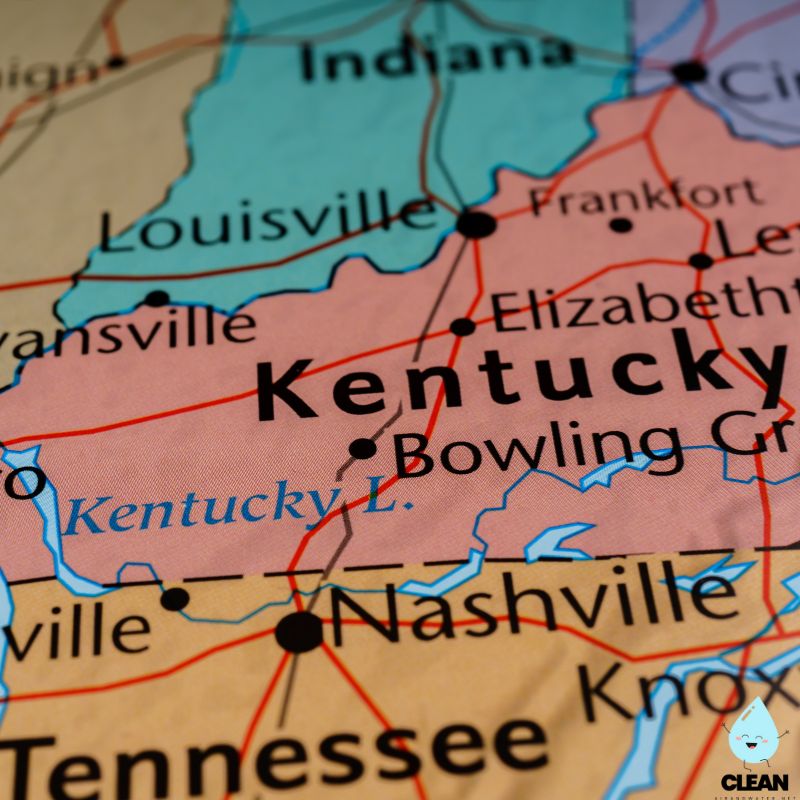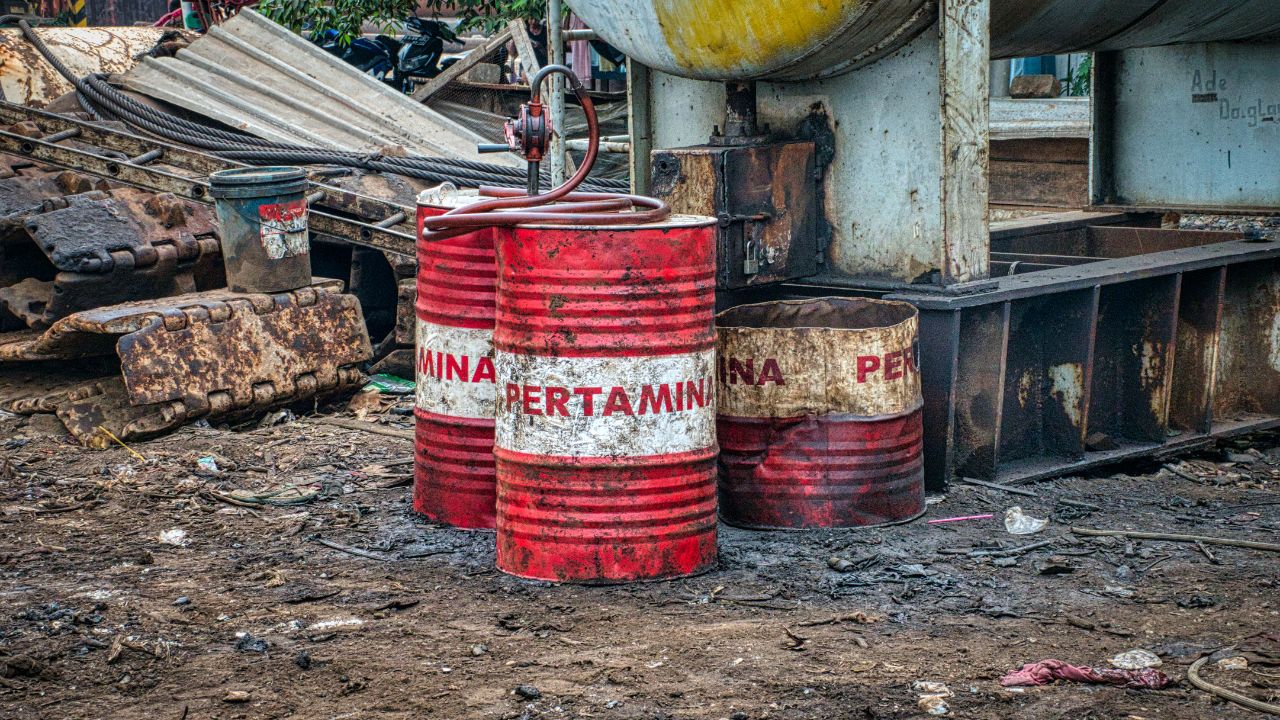Kentucky Water Quality at a Glance
some concerns
Is Kentucky Water Safe to Drink?
Generally Yes, With Regional Caution – Kentucky’s 435 public water systems show excellent overall compliance with less than 10% exceeding new federal PFAS limits. However, specific areas like South Shore, Lewisport, and parts of Lexington show elevated contamination. The state leads nationally in drinking water compliance, serving 95% of residents through regulated public systems with strong infrastructure investment ongoing.
⚠️ Key Concerns for Kentucky Residents
- Localized PFAS “Forever Chemicals”: South Shore had highest contamination levels statewide; Lewisport shows PFOS 3x higher than proposed standards
- Chromium-6: Lexington averages 76 ppt (4x above safe levels); Louisville reduced contamination by 80% through improved treatment
- Historical Coal Mining Impact: Eastern counties like Martin County face legacy contamination affecting water infrastructure and trust
- Disinfection Byproducts: Some systems show elevated haloacetic acids and trihalomethanes from water treatment processes
Read the full report below for detailed analysis, city-specific data, and actionable recommendations for Kentucky residents.
Kentucky – The Bluegrass State – Water Quality Report 2025: PFAS Testing, Infrastructure Concerns & Safety across your state
Kentucky’s water infrastructure serves approximately 4.59 million residents across diverse geographical regions, from the Appalachian Mountains in the east to the Mississippi River in the west. The state operates through a network of 435 public water systems, including major utilities like Louisville Water Company, which serves nearly one million customers, and Kentucky American Water, serving over 500,000 customers across multiple counties. Kentucky’s water sources include the Ohio River, Tennessee River, Kentucky River, and numerous groundwater aquifers that supply both urban centers and rural communities across the Commonwealth.
Kentucky faces moderate water quality challenges despite abundant water resources. According to recent state assessments, Kentucky’s drinking water infrastructure shows strong performance with fewer than 10% of water systems exceeding new federal PFAS limits. The state has received over $22 million in federal infrastructure investments from the Biden-Harris Administration’s Bipartisan Infrastructure Law specifically to address PFAS contamination, focusing on drinking water safety and emerging contaminant removal. Kentucky’s proactive approach to water quality monitoring since 2019, combined with strong partnerships between the Kentucky Energy and Environment Cabinet, local utilities, and federal agencies, demonstrates the state’s commitment to ensuring safe, reliable water access while addressing localized contamination challenges.

Kentucky Water Quality: Current Status (2024-2025)
Statewide Compliance and Testing
- Overall Compliance: Kentucky leads nationally in drinking water compliance with 435 public water systems meeting federal Safe Drinking Water Act standards. Fewer than 10% of systems have PFAS levels above new EPA maximum limits, demonstrating strong overall water quality management.
- PFAS Monitoring: Kentucky has conducted comprehensive PFAS testing since 2019, with the majority of contamination concentrated in specific locations like South Shore (highest levels statewide), Lewisport (PFOS 3x above proposed standards), and Marshall County’s North Marshall Water District.
- Infrastructure Investment: Over $22 million in federal funding through the Bipartisan Infrastructure Law has been allocated to Kentucky specifically for addressing PFAS contamination through the Emerging Contaminants in Small or Disadvantaged Communities Grant Program.
Major Water Sources and Challenges
- Ohio River System: Primary source for Louisville and numerous communities along the river. Louisville Water Company successfully reduced chromium-6 contamination by 80% through improved lime treatment processes, demonstrating effective contamination mitigation.
- Kentucky River Basin: Serves central Kentucky including Lexington area through Kentucky American Water. Lexington faces chromium-6 levels averaging 76 parts per trillion, nearly 4 times higher than safe levels established by California health officials.
- Rural Groundwater Systems: Approximately 5% of Kentuckians rely on private wells with limited monitoring. Eastern Kentucky faces particular challenges from historical coal mining contamination, as seen in Martin County’s ongoing water crisis.
Emerging Contaminant Response
- PFAS Regulation Implementation: New EPA drinking water standards for PFOA and PFOS (4 parts per trillion) take effect in 2029. Georgetown Municipal Water and Cynthiana Municipal systems are among those that will require compliance upgrades.
- Treatment Technology Deployment: Affected utilities are evaluating reverse osmosis and granular activated carbon filtration systems for PFAS removal. Lewisport approved a four-month pilot study using reverse osmosis technology.
- Legal Action and Accountability: Kentucky has joined lawsuits against chemical companies including DuPont de Nemours and 3M to recover costs for PFAS contamination monitoring and treatment, alleging these companies knowingly contaminated Kentucky’s natural resources.
Rural and Disadvantaged Communities
- Infrastructure Disparities: Rural water systems face challenges with aging infrastructure and higher per-capita compliance costs. Marshall County’s North Marshall Water District shut down a contaminated well serving 650 customers, demonstrating proactive contamination response.
- Targeted Federal Support: Kentucky’s $22 million in federal PFAS funding specifically targets small and disadvantaged communities through grants rather than loans, ensuring equitable access to clean water without excessive financial burden.
- System Coverage Achievement: Kentucky has achieved approximately 95% statewide public water service coverage, with ongoing investments through the Kentucky Infrastructure Authority supporting system improvements and consolidation efforts.
Looking Forward: 2025-2030
Kentucky’s water quality landscape faces targeted improvements as utilities prepare for new federal PFAS regulations taking effect in 2029. The state’s early investment in PFAS monitoring and testing since 2019, combined with targeted federal infrastructure funding, positions Kentucky well compared to other states. With fewer than 10% of systems requiring PFAS treatment upgrades, Kentucky’s challenge is more manageable than many states. Successful implementation will require continued collaboration between the Kentucky Energy and Environment Cabinet, water utilities, and communities to address localized contamination hotspots while maintaining the state’s strong overall water quality performance that serves 95% of residents through regulated public systems.
Recommendations for Kentucky Residents

Know Your Water Source
Contact your water utility to request annual water quality reports and ask about PFAS testing results. Visit the Kentucky Energy and Environment Cabinet website to access your local system’s testing data and understand any contaminants of concern in your area, particularly if you live near South Shore, Lewisport, or Lexington where higher contamination levels have been documented.

Support Infrastructure Investment
Stay informed about local water infrastructure needs and support utility rate structures that enable necessary improvements. Attend public meetings when utilities discuss infrastructure upgrades and PFAS treatment investments, particularly for systems identified as needing compliance upgrades by 2029.

Consider PFAS-Certified Filtration
For areas with documented PFAS or chromium-6 contamination (particularly South Shore, Lewisport, Marshall County, and Lexington), consider NSF-certified activated carbon or reverse osmosis filters specifically tested for PFAS and chromium-6 removal. These can provide additional protection while utilities implement treatment upgrades.

Report Water Quality Concerns
Contact your local water utility immediately for taste, odor, or color concerns. Report suspected contamination to the Kentucky Energy and Environment Cabinet’s Division of Water at (502) 564-3410 for investigation and follow-up.

Practice Water Conservation
Support Kentucky’s water sustainability by implementing conservation measures like efficient irrigation, rainwater harvesting, and low-flow fixtures. Reducing demand helps utilities maintain system reliability and affordability.
Kentucky Cities We Cover
Louisville Water Quality
Comprehensive analysis of Louisville Water Company, serving nearly one million customers in the Louisville metro area. Includes information on Ohio River water sources, treatment processes, successful chromium-6 reduction (80% decrease through improved lime treatment), and ongoing PFAS monitoring results.
Frequently Asked Questions
Is Kentucky’s tap water safe to drink?
Kentucky’s public water systems are among the safest in the nation, with most systems meeting federal drinking water standards. However, some localized areas have detectable PFAS or chromium-6 levels that warrant attention.
Kentucky leads nationally in drinking water compliance with 435 public water systems serving 95% of residents. Fewer than 10% of systems have PFAS levels above new EPA maximum limits requiring treatment by 2029. Specific areas of concern include South Shore (highest PFAS levels statewide), Lewisport (PFOS 3x above proposed standards), and Lexington (chromium-6 at 76 ppt, 4x above safe levels). Water utilities are implementing advanced treatment technologies and the state has received over $22 million in federal funding specifically to address these challenges.
What are PFAS chemicals and why are they a concern in Kentucky?
PFAS (per- and polyfluoroalkyl substances) are synthetic “forever chemicals” that don’t break down naturally in the environment or human body.
Kentucky has detected PFAS in multiple water systems, with the highest concentrations found in South Shore. These chemicals have been linked to cancer, liver damage, immune system effects, and other health concerns. The EPA finalized new drinking water standards in 2024 limiting PFOA and PFOS to 4 parts per trillion, requiring water systems to comply by 2029. Kentucky has been proactively testing for PFAS since 2019 and has filed lawsuits against major polluters like DuPont de Nemours and 3M to recover cleanup costs.
How can I find out about my local water quality?
Kentucky residents can access comprehensive water quality information through several resources:
• Annual Water Quality Reports: Contact your water utility directly for their Consumer Confidence Report, which details all testing results and any violations or concerns
• Kentucky Energy and Environment Cabinet: Visit the state’s Division of Water website to access testing results and compliance information for your local water system
• PFAS Testing Data: Kentucky has been testing for PFAS since 2019 and makes results available through the Energy and Environment Cabinet
• Utility-Specific Information: Major utilities like Louisville Water Company and Kentucky American Water provide detailed water quality information on their websites
Why does Kentucky have localized water quality challenges?
While Kentucky has excellent overall water quality, certain regions face specific challenges:
Historical Industrial Activity: Areas near former industrial sites and military installations (like Fort Knox and Blue Grass Army Depot) show elevated PFAS levels from past firefighting foam use
Geographic Variations: Natural chromium-6 occurrence and industrial sources affect specific watersheds, particularly around Lexington
Coal Mining Legacy: Eastern Kentucky faces ongoing challenges from historical coal mining contamination, affecting both surface and groundwater sources
Agricultural Impacts: Agricultural runoff affects water quality in certain watersheds, though this is managed through state watershed protection programs
The state addresses these challenges through targeted monitoring, treatment upgrades, federal funding, and ongoing system improvements that have achieved 95% public water service coverage.
Quality News About Your Water
Get the comprehensive water quality news coverage you need with our dedicated US Water News Service. From coast to coast, we deliver in-depth reporting and expert analysis on PFAS contamination, EPA regulatory changes, infrastructure developments, and emerging water safety issues affecting communities nationwide. While mainstream media only covers the biggest stories, we provide the detailed, ongoing coverage that helps you understand the full scope of America’s water challenges. Whether you’re a concerned citizen, water professional, or community leader, our daily updates and analytical insights keep you informed about the issues that matter most to public health and environmental safety.
Contaminants of Concern

PFAS “Forever Chemicals”
Source: Industrial manufacturing, firefighting foam use at military bases like Fort Knox and Blue Grass Army Depot, consumer products including non-stick cookware and stain-resistant textiles
Health Effects: Linked to kidney and testicular cancer, liver damage, immune system suppression, high cholesterol, and developmental effects in children
Current Status: Fewer than 10% of Kentucky’s 435 water systems exceed new EPA limits requiring treatment upgrades by 2029. Highest levels found in South Shore, with Lewisport showing PFOS 3x above proposed standards and Marshall County’s North Marshall Water District with PFOA nearly 3x above standards. EPA Limits: 4 ppt for PFOA and PFOS individually, with hazard index for other PFAS compounds

Chromium-6 and Industrial Contaminants
Source: Industrial processes, electroplating, natural mineral deposits, and water treatment processes using lime softening agents throughout Kentucky’s watersheds
Health Effects: Chromium-6 is a suspected carcinogen linked to stomach cancer, with potential liver damage and immune system impacts from prolonged exposure to elevated levels
Current Status: Lexington averages 76 parts per trillion (4x above California’s safe level of 0.02 ppb). Louisville Water Company successfully reduced chromium-6 by 80% through improved lime treatment processes, demonstrating effective contamination control. Regulatory Response: No federal limit exists; California sets standard at 10 ppb, with health goal of 0.02 ppb
Please read – our information
The information presented on cleanairandwater.net is compiled from official water quality reports, trusted news sources, government websites, and public health resources. While we strive for accuracy and thoroughness in our presentations, we are not scientists, engineers, or qualified water quality professionals.
Our mission is to present water quality information in an accessible, real-world format that helps people understand what’s in their water and make informed decisions about their health and safety. We believe that complex environmental information should be available to everyone in a format that’s easy to understand.
We make every effort to ensure our content is current and accurate, but we cannot guarantee that all information is complete or error-free. This website should not replace official communications from your local water utility or health department. We always recommend consulting official sources for the most up-to-date information regarding your specific water system.
Clean Air and Water is not liable for any unintentional errors, omissions, or outdated information. The content on this site is provided for informational purposes only and should not be considered professional advice.


